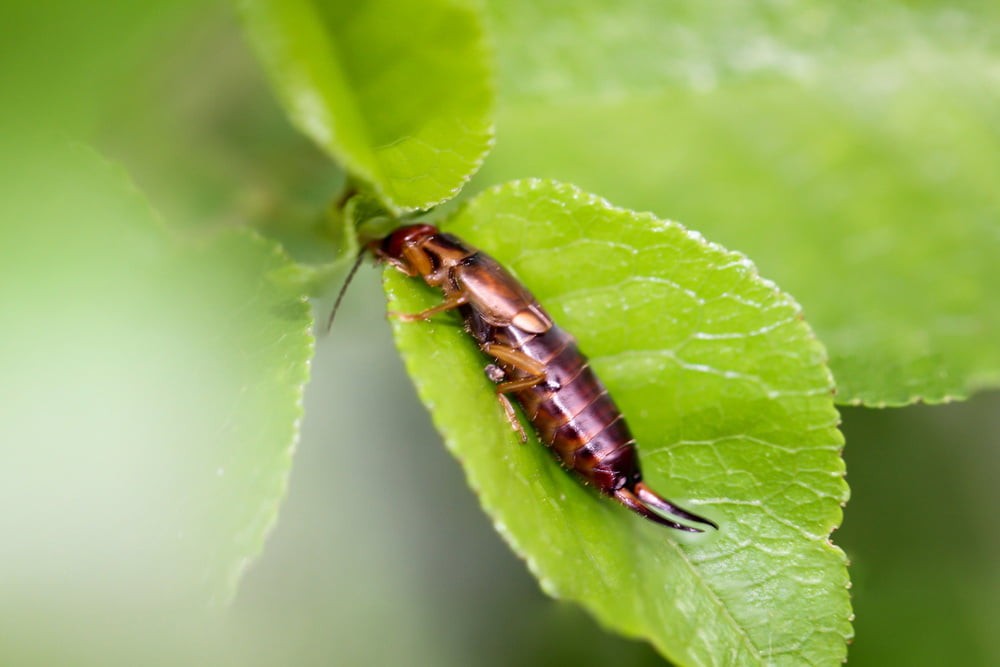The name is deceptive: earwigs have no interest in ears and are completely harmless to humans. If the insects appear in masses or get into the apartment, it is still unpleasant. We explain how you can combat and drive away earwigs.
Earwigs are also known as earwigs, earwigs or earwigs. However, the correct name for the flying insects is earwig. How to get rid of an earwig, read here.
Contents
Are earwigs dangerous?
In the Middle Ages through the early modern period, ground earwigs were a frequently administered remedy for ear disease and deafness. The insects probably got their name from this use.

For humans, the animals are completely harmless: The long pincers look threatening, but are only used by the earwigs for hunting and defense. The widespread fear that earwigs crawl into the ears at night and lay their eggs in the auditory canal or rupture the eardrum can be classified as a misconception.
How earwigs live
Earwigs are nocturnal and like to hide during the day in damp, cool places such as cracks in walls, under flower pots or stones. Worldwide, 1,700 species are known, of which only seven are native to Central Europe. In Europe, the common earwig (Forficula auricularia) is particularly widespread.
Earwigs in this country grow to a length of about ten to 25 millimeters and are reddish brown to dark brown in color. Males and females can be distinguished mainly by the pincers on the abdomen: These are much more curved in male earwigs.
The pincers are used by earwigs both for hunting and mating, and are also used for defense against attackers. Some species of earwigs can fly, and the pincers also help them unfold their wings, which are otherwise well hidden under a shell.
Earwigs as beneficial insects
In fact, earwigs are actually very useful in the garden. They not only eat aphids, but also help control other pests. For example, you can use earwigs to control codling moths and webbing moths, as well as mites. In addition, earwigs also eat tree fungi.
Fruit trees in particular benefit from earwigs destroying pests. So it pays to provide a habitat for earwigs in your private garden.
Read here how earwigs help control rose pests.
Hibernate earwigs: build your own earwig hotel
To help earwigs overwinter in your garden, don’t clear away piles of leaves or brushwood when winterizing your garden. In this way, you provide earwigs and other animals with a refuge to overwinter. In addition, you can also build an earwig hotel yourself.
Provide a clay flower pot with a way to hang. For example, you can tie a string in a loop around a sturdy cross piece of wood. Pull the loop through the hole so that the wood gets caught in the flower pot.
Fill the flower pot tightly with fresh straw or wood shavings. The filling should be tight enough that it will not fall out of the flower pot if, for example, a strong wind blows. You can also further secure the filling by fastening a piece of rabbit wire over the opening of the flower pot.
Place the earwig shelter outside with the opening facing down as early as March, ideally near piles of leaves or brushwood where earwigs like to overwinter.
Then, at the beginning of summer, hang the shelter in a fruit tree with the opening facing down.
Make sure the flower pot touches the trunk or branch so earwigs can come and go easily.
However, earwigs like to gnaw on flowers and plant parts. They will also gratefully accept damaged fruit, but the earwigs’ mouthparts are not strong enough to penetrate the fruit skins of apples, pears and co themselves.
Get rid of earwigs: Fight earwigs without chemicals
Even with the knowledge that earwigs are harmless, it is unpleasant when the insects appear in masses or even enter the home.
To remove earwigs, you can take advantage of their preference for dark, damp places: Place a damp piece of cloth or kitchen towel in the room overnight and remove it the next morning. The moisture will attract earwigs, so you can simply use the cloth to move them out of the room.
Build earwig trap
You can also use an earwig shelter as a trap. However, to do this, you should rebuild the earwig trap specifically so that you do not carry earwigs from outside into the house.
Fighting earwigs in the garden
If earwigs do become too numerous, you can also use the homemade earwig traps for outside. Simply attach the clay pots near the ground on the patio or balcony. The earwigs like to use the earwig hotel as a hiding place during the day and can be easily relocated.
Under no circumstances should you destroy earwigs in the garden: It is a criminal offense to control earwigs in the garden.
If the earwigs appear too numerous, rather opt for one of the presented methods to relocate earwigs and otherwise enjoy the benefits of these small pest controllers.


